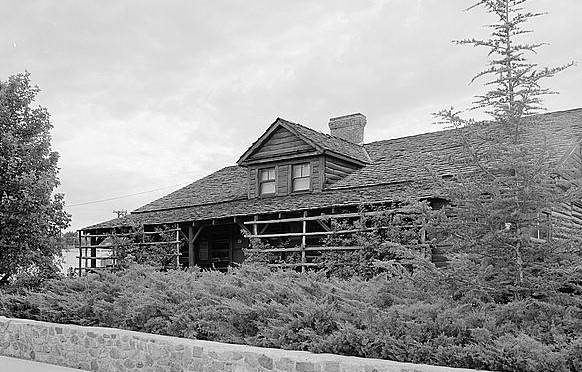|
Louisa Wade Wetherill
Louisa Wade Wetherill (2 September 1877 – 18 September 1945) lived with her husband and children in remote trading posts among the Navajo people in New Mexico, Utah, and Arizona for more than 25 years and became an authority on Navajo culture. She spoke the Navajo language and became expert in medicinal herbs and plants known to the Navajo, art, especially sandpainting, traditional stories, and weaving. She was known by the Navajo as ''Asthon Sosi'' or "Slim Woman." Early life and family Mary Louise Wade was born 2 September 1877 in Wells, Nevada, the daughter of Jack Wade, a U.S. Army Captain, and Julia France Rush Wade. When she was about two years old, the family moved to Mancos, Colorado. The Wetherill family lived nearby. Louisa married John Wetherill, 30 years old, on 17 March 1896 when she was eighteen. John Wetherill was one of several brothers who became interested in the ruins and artifacts left by the Ancestral Puebloans who had lived six hundred years earlier at ... [...More Info...] [...Related Items...] OR: [Wikipedia] [Google] [Baidu] |
Prescott, Arizona
Prescott ( ) is a city in Yavapai County, Arizona, United States. According to the 2020 Census, the city's population was 45,827. The city is the county seat of Yavapai County. In 1864, Prescott was designated as the capital of the Arizona Territory, replacing the temporary capital of Fort Whipple. The Territorial Capital was moved to Tucson in 1867. Prescott again became the Territorial Capital in 1877, until Phoenix became the capital in 1889. Prescott has a rich history as a frontier gold and silver mining town. Mining and settlers brought frequent conflict with native American tribes in the area, including the Yavapai and Apache. Prescott was the home to Fort Whipple from its inception, which acted as a base for campaigns against natives. Prescott was a stereotypical "wild west" town during the latter half of the 19th century; famous residents included Doc Holliday and Virgil Earp of the gunfight at the O.K. Corral. The makeshift wooden town burned to the ground sever ... [...More Info...] [...Related Items...] OR: [Wikipedia] [Google] [Baidu] |
Sand Painting
Sandpainting is the art of pouring coloured sands, and powdered pigments from minerals or crystals, or pigments from other natural or synthetic sources onto a surface to make a fixed or unfixed sand painting. Unfixed sand paintings have a long established cultural history in numerous social groupings around the globe, and are often temporary, ritual paintings prepared for religious or healing ceremonies. This form of art is also referred to as drypainting. Drypainting is practised by Native Americans in the Southwestern United States, by Tibetan and Buddhist monks, as well as Indigenous Australians, and also by Latin Americans on certain Christian holy days. History Native American sandpainting In the sandpainting of southwestern Native Americans (the most famous of which are the Navajo nown as the Diné, the Medicine Man (or ''Hatałii'') paints loosely upon the ground of a hogan, where the ceremony takes place, or on a buckskin or cloth tarpaulin, by letting the colou ... [...More Info...] [...Related Items...] OR: [Wikipedia] [Google] [Baidu] |
Clyde Kluckhohn
Clyde Kluckhohn (; January 11, 1905 in Le Mars, Iowa – July 28, 1960 near Santa Fe, New Mexico), was an American anthropologist and social theorist, best known for his long-term ethnographic work among the Navajo and his contributions to the development of theory of culture within American anthropology. Early life and education Kluckhohn matriculated at Princeton University, but was forced by ill health to take a break from study and went to convalesce on a ranch in New Mexico owned by his mother's cousin's husband, Evon Z. Vogt (father of anthropologist Evon Z. Vogt, Jr.). During this period he first came into contact with neighboring Navajo and began a lifelong love of their language and culture. He wrote two popular books based on his experiences in Navajo country, ''To the Foot of the Rainbow'' (1927) and ''Beyond the Rainbow'' (1933). He resumed study at the University of Wisconsin–Madison and received his AB in Greek 1928. He then studied classics at Corpus Christi Col ... [...More Info...] [...Related Items...] OR: [Wikipedia] [Google] [Baidu] |
Oliver La Farge
Oliver Hazard Perry La Farge II (December 19, 1901 – August 2, 1963) was an American writer and anthropologist. In 1925 he explored early Olmec sites in Mexico, and later studied additional sites in Central America and the American Southwest. In addition to more than 15 scholarly works, mostly about Native Americans, he wrote several novels, including the Pulitzer Prize-winning, '' Laughing Boy'' (1929). La Farge also wrote and published short stories, in such leading magazines as ''The New Yorker'' and ''Esquire''. His more notable works, both fiction and non-fiction, emphasize Native American culture. He was most familiar with the Navajo people, had a speaking knowledge of their language, and was nicknamed by them 'Anast'harzi Nez', i.e. "Tall Cliff-Dweller". Early life and education Oliver La Farge was born in New York City but grew up in Newport, Rhode Island. He was the son of Christopher Grant La Farge, a noted Beaux-Arts architect, and Florence Bayard Lockwood. ... [...More Info...] [...Related Items...] OR: [Wikipedia] [Google] [Baidu] |
Theodore Roosevelt
Theodore Roosevelt Jr. ( ; October 27, 1858 – January 6, 1919), often referred to as Teddy or by his initials, T. R., was an American politician, statesman, soldier, conservationist, naturalist, historian, and writer who served as the 26th president of the United States from 1901 to 1909. He previously served as the 25th vice president of the United States, vice president under President William McKinley from March to September 1901 and as the 33rd governor of New York from 1899 to 1900. Assuming the presidency after Assassination of William McKinley, McKinley's assassination, Roosevelt emerged as a leader of the History of the Republican Party (United States), Republican Party and became a driving force for United States antitrust law, anti-trust and Progressive Era, Progressive policies. A sickly child with debilitating asthma, he overcame his health problems as he grew by embracing The Strenuous Life, a strenuous lifestyle. Roosevelt integrated his exuberant personalit ... [...More Info...] [...Related Items...] OR: [Wikipedia] [Google] [Baidu] |
Project MUSE
Project MUSE, a non-profit collaboration between libraries and publishers, is an online database of peer-reviewed academic journals and electronic books. Project MUSE contains digital humanities and social science content from over 250 university presses and scholarly societies around the world. It is an aggregator of digital versions of academic journals, all of which are free of digital rights management (DRM). It operates as a third-party acquisition service like EBSCO, JSTOR, OverDrive, and ProQuest. MUSE's online journal collections are available on a subscription basis to academic, public, special, and school libraries. Currently, more than 2,500 libraries worldwide subscribe. Electronic book collections became available for institutional purchase in January 2012. Thousands of scholarly books are available on the platform. History Project MUSE was founded in 1993 as a joint project between the Johns Hopkins University Press and the Milton S. Eisenhower Library at the Johns ... [...More Info...] [...Related Items...] OR: [Wikipedia] [Google] [Baidu] |
Kayenta
Kayenta ( nv, ) is a U.S. town which is part of the Navajo Nation and is in Navajo County, Arizona, United States. Established November 13, 1986, the Kayenta Township is the only "township" existing under the laws of the Navajo Nation, making it unique in this way. The population was 5,189 at the 2010 census. Kayenta is located south of Monument Valley and contains a number of hotels and motels which serve visitors to Monument Valley. Like other places on the Navajo Nation, it is illegal to serve alcohol. Arizona does not observe Daylight Time; however, the Navajo reservation does. Kayenta Township is the only municipal-style government on the Navajo Nation. It is regarded as a political sub-division of the Navajo Nation. It is managed by a five-member elected town board, which hires the township manager. Kayenta is the name for the Chapter, as well as the township. Kayenta Chapter (a political division within the Navajo Nation that is analogous to a county within a state) en ... [...More Info...] [...Related Items...] OR: [Wikipedia] [Google] [Baidu] |
Southern Paiute
The Southern Paiute people are a tribe of Native Americans who have lived in the Colorado River basin of southern Nevada, northern Arizona, and southern Utah. Bands of Southern Paiute live in scattered locations throughout this territory and have been granted federal recognition on several reservations. The first European contact with the Southern Paiute occurred in 1776, when fathers Silvestre Vélez de Escalante and Francisco Atanasio Domínguez encountered them during an attempt to find an overland route to the missions of California. They noted that some of the Southern Paiute men "had thick beards and were thought to look more in appearance like Spanish men than native Americans". Before this date, the Southern Paiute suffered slave raids by the Navajo and the Ute. The arrival of Spanish and later Euro-American explorers into their territory increased slave raiding by other tribes. In 1851, Mormon settlers strategically occupied Paiute water sources, which created a depend ... [...More Info...] [...Related Items...] OR: [Wikipedia] [Google] [Baidu] |
Ute People
Ute () are the Indigenous people of the Ute tribe and culture among the Indigenous peoples of the Great Basin. They had lived in sovereignty in the regions of present-day Utah and Colorado in the Southwestern United States for many centuries until European settlers conquered their lands. The state of Utah is named after the Ute tribe. In addition to their ancestral lands within Colorado and Utah, their historic hunting grounds extended into current-day Wyoming, Oklahoma, Arizona, and New Mexico. The tribe also had sacred grounds outside their home domain that were visited seasonally. There were 12 historic bands of Utes. Although they generally operated in family groups for hunting and gathering, the communities came together for ceremonies and trading. Many Ute bands were culturally influenced by neighboring Native American tribes and Puebloans, whom they traded with regularly. After contact with early European colonists, such as the Spanish, the Ute formed trading relatio ... [...More Info...] [...Related Items...] OR: [Wikipedia] [Google] [Baidu] |
Medicine Man
A medicine man or medicine woman is a traditional healer and spiritual leader who serves a community of Indigenous people of the Americas. Individual cultures have their own names, in their respective languages, for spiritual healers and ceremonial leaders in their particular cultures. Cultural context In the ceremonial context of Indigenous North American communities, "medicine" usually refers to ''spiritual'' healing. Medicine men/women should not be confused with those who employ Native American ethnobotany, a practice that is very common in a large number of Native American and First Nations households.Alcoze, Dr Thomas M. Ethnobotany from a Native American Perspective: Restoring Our Relationship with the Earth" in ''Botanic Gardens Conservation International'' Volume 1 Number 19 - December 1999Northeastern Area State and Private Forestry,Traditional Ecological Knowledge: Sustaining Our Lives and the Natural World at ''United States Department of Agriculture, Forest Ser ... [...More Info...] [...Related Items...] OR: [Wikipedia] [Google] [Baidu] |
Gallup, New Mexico
Zuni: ''Kalabwaki'' , settlement_type = City , nickname = "Indian Capital of the World" , motto = , image_skyline = Gallup, New Mexico.jpg , imagesize = 250px , image_caption = Motels and businesses in Gallup , image_flag = Flag of Gallup, New Mexico.svg , image_seal = , image_map = McKinley_County_New_Mexico_Incorporated_and_Unincorporated_areas_Gallup_Highlighted.svg , mapsize = 250px , map_caption = Location of Gallup in New Mexico , image_map1 = , mapsize1 = , map_caption1 = , pushpin_map = USA , pushpin_map_caption = Location in the United States , subdivision_type = Country , subdivision_type1 = State , subdivision_type2 = County , subdivision_name = United States , subdivision_name1 = New Mexico , subdivision_name2 = McKinley , governmen ... [...More Info...] [...Related Items...] OR: [Wikipedia] [Google] [Baidu] |







